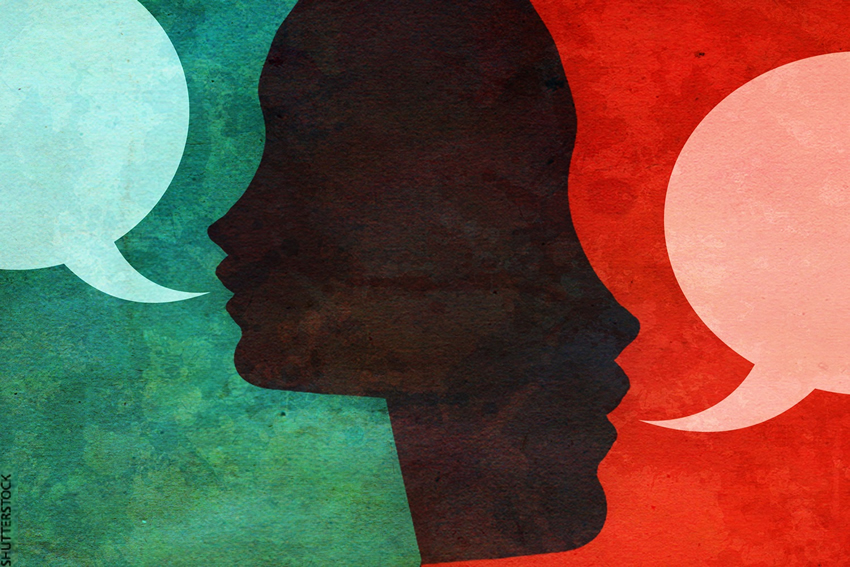
There are two sides to every conversation, and both are essential to the art of communication.
So, how are your conversation skills? Think about it: Are you a smooth talker, or do you ramble? Are you an attentive listener, or do you tend to interrupt?
Here’s how to master the art of conversation—both sides of it:
When it’s your turn to talk…
1. Get your thinking straight.
The most common source of confusing messages is muddled thinking. We have an idea we haven’t thought through. Or we have so much we want to say that we can’t possibly say it. Or we have an opinion that is so strong we can’t keep it in. As a result, we are ill-prepared when we speak, and we confuse everyone. The first rule of plain talk, then, is to think before you say anything. Organize your thoughts.
2. Say what you mean.
Say exactly what you mean.
3. Get to the point.
Effective communicators don’t beat around the bush. If you want something, ask for it. If you want someone to do something, say exactly what you want done.
4. Be concise.
Don’t waste words. Confusion grows in direct proportion to the number of words used. Speak plainly and briefly, using the shortest, most familiar words.
5. Be real.
Each of us has a personality—a blending of traits, thought patterns and mannerisms—which can aid us in communicating clearly. For maximum clarity, be natural and let the real you come through. You’ll be more convincing and much more comfortable.
6. Speak in images.
The cliché that “a picture is worth a thousand words” isn’t always true. But words that help people visualize concepts can be tremendous aids in communicating a message.
But talking, or sending messages, is only half the process. To be a truly accomplished communicator, you must also know how to listen, or receive messages.
If you’re approaching a railroad crossing around a blind curve, you can send a message with your car horn. But that’s not the most important part of your communication task. The communication that counts takes place when you stop, look and listen—a useful admonition for conversation, too.
So, when it’s your turn to listen…
1. Do it with thought and care.
Listening, like speaking and writing, requires genuine interest and attention. If you don’t concentrate on listening, you won’t learn much, and you won’t remember much of what you do learn. Most of us retain only 25 percent of what we hear—so if you can increase your retention and your comprehension, you can increase your effectiveness.
A sign on the wall of Lyndon Johnson’s Senate office put it in a down-to-earth way: “When you’re talking, you ain’t learning.”
2. Use your eyes.
If you listen only with your ears, you’re missing out on much of the message. Good listeners keep their eyes open while listening. Look for feelings. The face is an eloquent communication medium—learn to read its messages. While the speaker is delivering a verbal message, the face can be saying, “I’m serious,” “Just kidding,” “It pains me to be telling you this,” or “This gives me great pleasure.”
3. Observe these nonverbal signals when listening to people:
- Rubbing one eye. When you hear “I guess you’re right,” and the speaker is rubbing one eye, guess again. Rubbing one eye often is a signal that the speaker is having trouble inwardly accepting something.
- Tapping feet. When a statement is accompanied by foot-tapping, it usually indicates a lack of confidence in what is being said.
- Rubbing fingers. When you see the thumb and forefinger rubbing together, it often means that the speaker is holding something back.
- Staring and blinking. When you see the other person staring at the ceiling and blinking rapidly, the topic at hand is under consideration.
- Crooked smiles. Most genuine smiles are symmetrical. And most facial expressions are fleeting. If a smile is noticeably crooked, you’re probably looking at a fake one.
- Eyes that avoid contact. Poor eye contact can be a sign of low self-esteem, but it can also indicate that the speaker is not being truthful.
It would be unwise to make a decision based solely on these visible signals. But they can give you valuable tips on the kind of questions to ask and the kind of answers to be alert for.
4. Make things easy.
People who are poor listeners will find few who are willing to come to them with useful information. Good listeners make it easy on those to whom they want to listen. They make it clear that they’re interested in what the other person has to say.